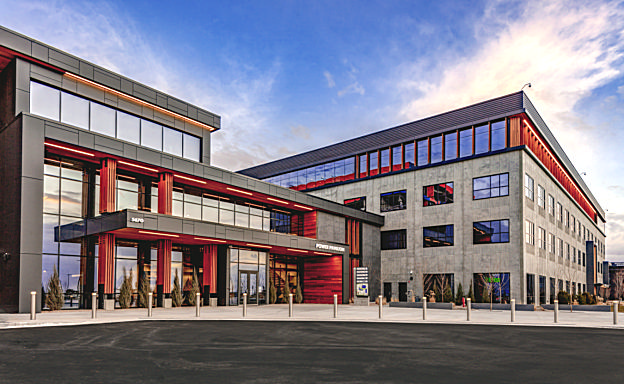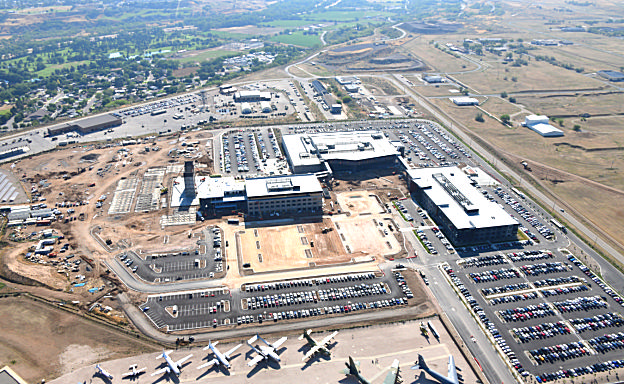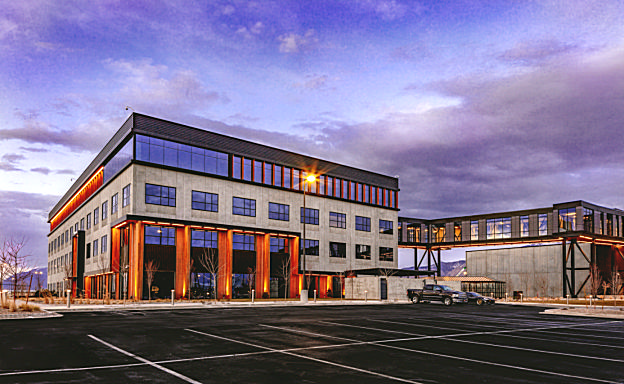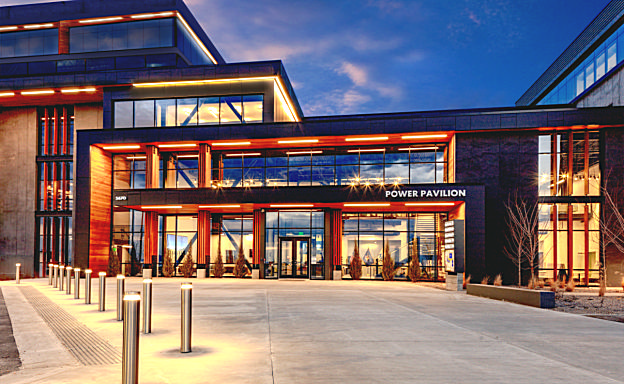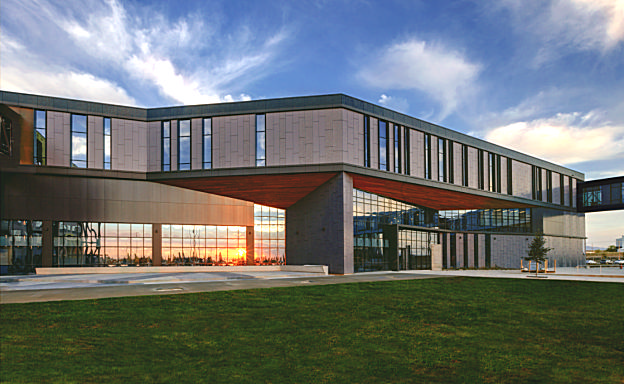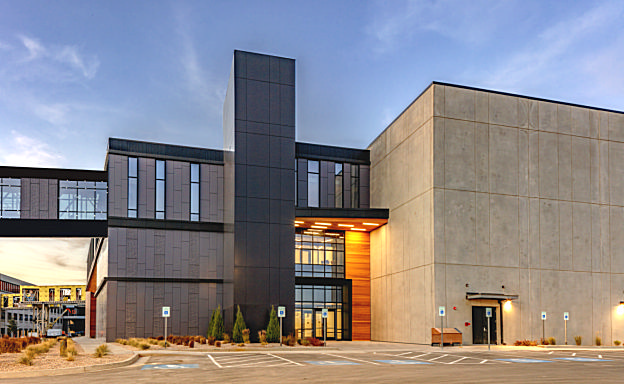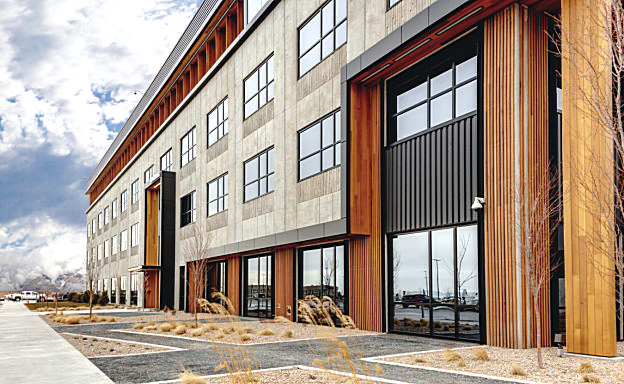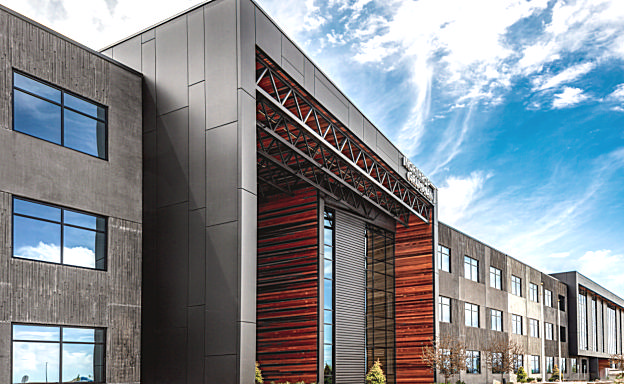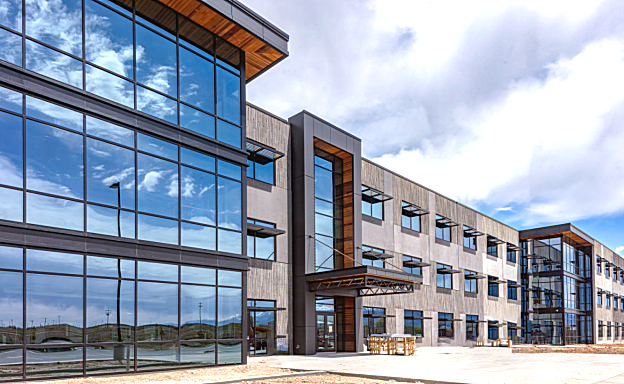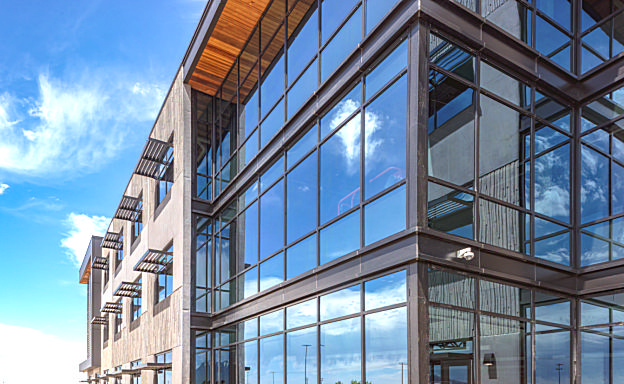Roy Innovation Center Buildings 1-3A
Summarize the project's program, features and achievements.
The Roy Innovation Center (RIC) is located at Hill Air Force Base in Utah. Designed for a classified defense contractor, the need for high security required unorthodox construction components and collaboration between Hill Air Force Base, architects, engineers, and construction teams. In designing each building on the campus, the goal was to reflect the principles and values of the tenant occupying them. Being located on the Air Force base, the buildings were designed to incorporate classic aspects of the aviation industry. The buildings range from approximately 150,000 to 300,000 square feet on a campus of 65 acres. Tilt-up concrete panels allowed an expedited schedule while keeping the secure campus cost efficient. The buildings also incorporate buckling restrained braced frames, structural steel, and curtain wall elements. The combination of tilt-up concrete and buckling restrained braced frames allowed to capture the efficiencies of tilt-up concrete while also permitting flexibility in the architecture where desired. Rather than attempting to disguise with paint what could easily become an unforgiving building, a natural concrete finish was desired. The panelized nature of tilt-up construction enabled variation to be achieved by adding unconventional locations of control joints and board-framed sections. These visual aspects help tell a story of aircraft craftmanship. A gradient was achieved by tinting concrete to abstract the effect of the sun washing across an aerodynamic object's curved surfaces. Some of these exterior finishes and fine touches include IMAR panels, ordered from Spain, that mirror the rivets of WWII fighter jets. In a similar vein, the exposed trusses evident at the north entry portal nod to the feelings of awe that one has when entering a monumental aircraft hangar.
What obstacles were overcome related to the schedule, budget, program, specification, site, etc. on this project?
Being located on the Hill Air Force Base, the site of the project needed to be cleared of asbestos, explosives residue, steam lines and tanks, with an abundance of existing utilities needing relocation. This required a specialty demolition contractor to clear and properly prep the site to ensure safety. The increased security and classified nature of the client created interesting pressures on the construction and engineering teams while they were working on the project. The base perimeter at Hill Air Force Base (HAFB) also made logistics difficult for contractors, staff, and materials to pass security checks. To mitigate this, HAFB then relocated the base's fence perimeter to just outside the work site lines which was critical to the success of meeting deadlines. Each building on the campus was subject to a compressed schedule to meet the client's needs. Building One had an original schedule of 11 months and was delivered in just over nine months. Building Two was slated for a 24-month schedule, but was turned over in 16 months at the client's request. Buildings 3 and 3A were also on a compressed schedule and were delivered two months prior to the delivery date. Unsurprisingly, the COVID-19 Pandemic created unprecedented obstacles to overcome. Issues concerning illness, social distancing, and the slow-down of the supply chain created opportunities for problem solving. One example of supply chain issues is in situations calling for 12-gauge studs, materials of lesser gauge were used, doubling their spacing to ensure proper structural integrity.
Communicate any engineering complexities or unique features of the panel design for this project.
The Roy Innovation Center Campus required an accelerated construction schedule in order to deliver four buildings in a short period of time. When investigating structural systems compatible with the fast-paced construction, tilt-up quickly became the frontrunning system. Located in an area of high seismicity along a nearby fault, the concrete tilt-up panels were utilized not only for the gravity support of the building, but also for the earthquake level forces and detailing. All 200 plus tilt-up panels on the campus were designed and detailed as special reinforced concrete shear walls, with nearly 300 diagonally reinforced coupling beams. The tilt-up panels were designed to limit the seismic drifts of the building to within code limits while providing sufficient entry points for natural light. Sufficient reinforcement in the tilt panel legs were designed to meet the amplified seismic forces required by code while also providing the necessary confinement required in areas of high seismicity. The use of tilt-up panels to resist both the gravity and lateral loads provided an economical and efficient use of time and resources, both of which were crucial to the success of the project.
What is the potential for this project's impact on the community and/or environment?
The Roy Innovation Center will bring many new jobs to Utah. Projections indicate that 5,000 new jobs will be available in the Roy and Riverdale area. Of those 5,000 openings, 2,500 will be high-skill, high-paying positions. This increase in employment will also bring increased tax revenues to the surrounding communities.
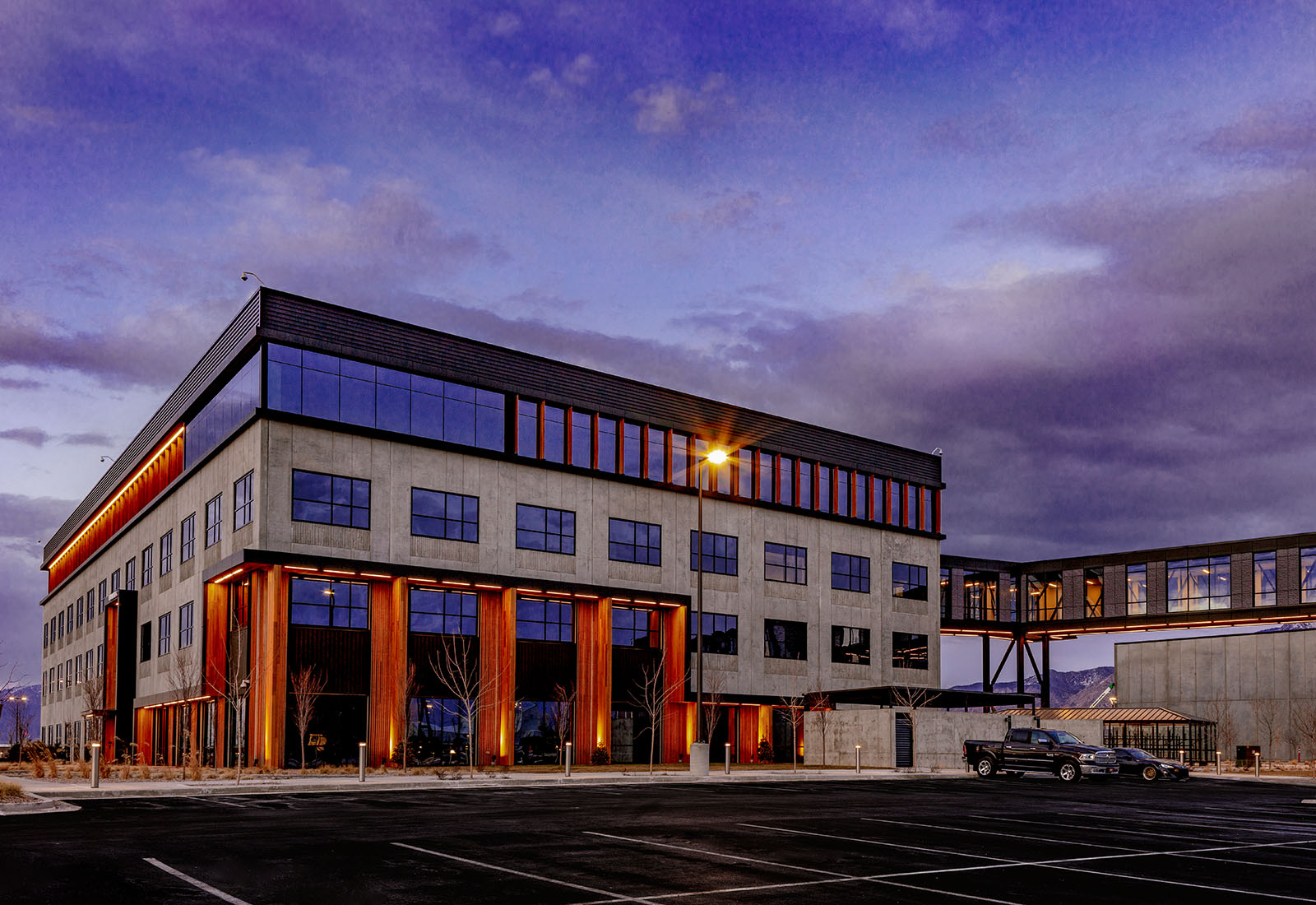
Project Location
Roy, UT 84067
United States
TILT-UP ACHIEVEMENT AWARD
The Tilt-Up Achievement Awards were established to honor projects that use site-cast tilt-up concrete to introduce new building types, advance industry technology and provide unique solutions to building programs. Winning entries illustrate the variety, beauty, and flexibility of tilt-up construction.
EXCELLENCE
2022
The excellence designation is given to the highest scoring projects each year representing the top 10-12 projects. Learn more >
Project Images
Project Team (TCA Members)
- Developer/Owner:
- General Contractor:
- Rogers-OBrien Construction
- Concrete Contractor:
- Rogers-OBrien Construction
- Phaze Concrete, Inc.
- Architect:
- Engineer:
- Dunn Associates
- Suppliers:
- Photographer(s):
- Robert Casey Photo
Project Specifics
- Project Category:
- Office
- Building Types:
- Office
- Finishes:
- Stain
- Features:
- Stacked Panels
- Insulation:
- Post Applied (Interior)
- Environmental:
- Number of Floors:
- 4
- Number of Panels:
- 295 panels
- Tilt-Up Wall Area:
- 181,000 sq ft (16,815 sq m)
- Total Floor Area:
- 680,000 sq ft (63,172 sq m)
- Project Footprint:
- 250,000 sq ft (23,225 sq m)
- Tallest Panel:
- 56 ft 4 in (17.17 m)
- Widest Panel:
- 24 ft 8 in (7.52 m)
- Largest Panel:
- 1,260 sq ft (117.1 sq m)
- Heaviest Panel:
- 179,700 lbs (81,511 kg)
